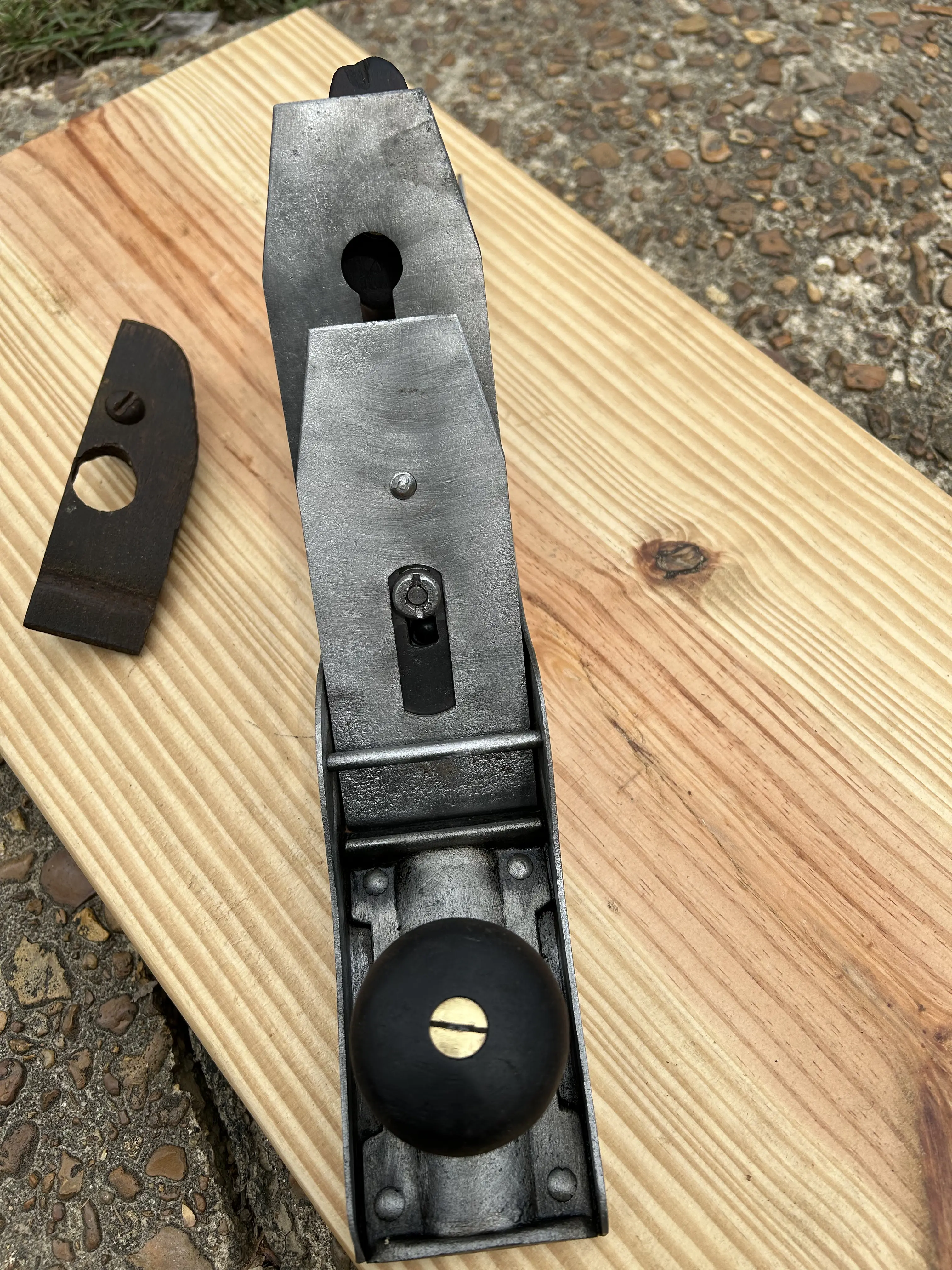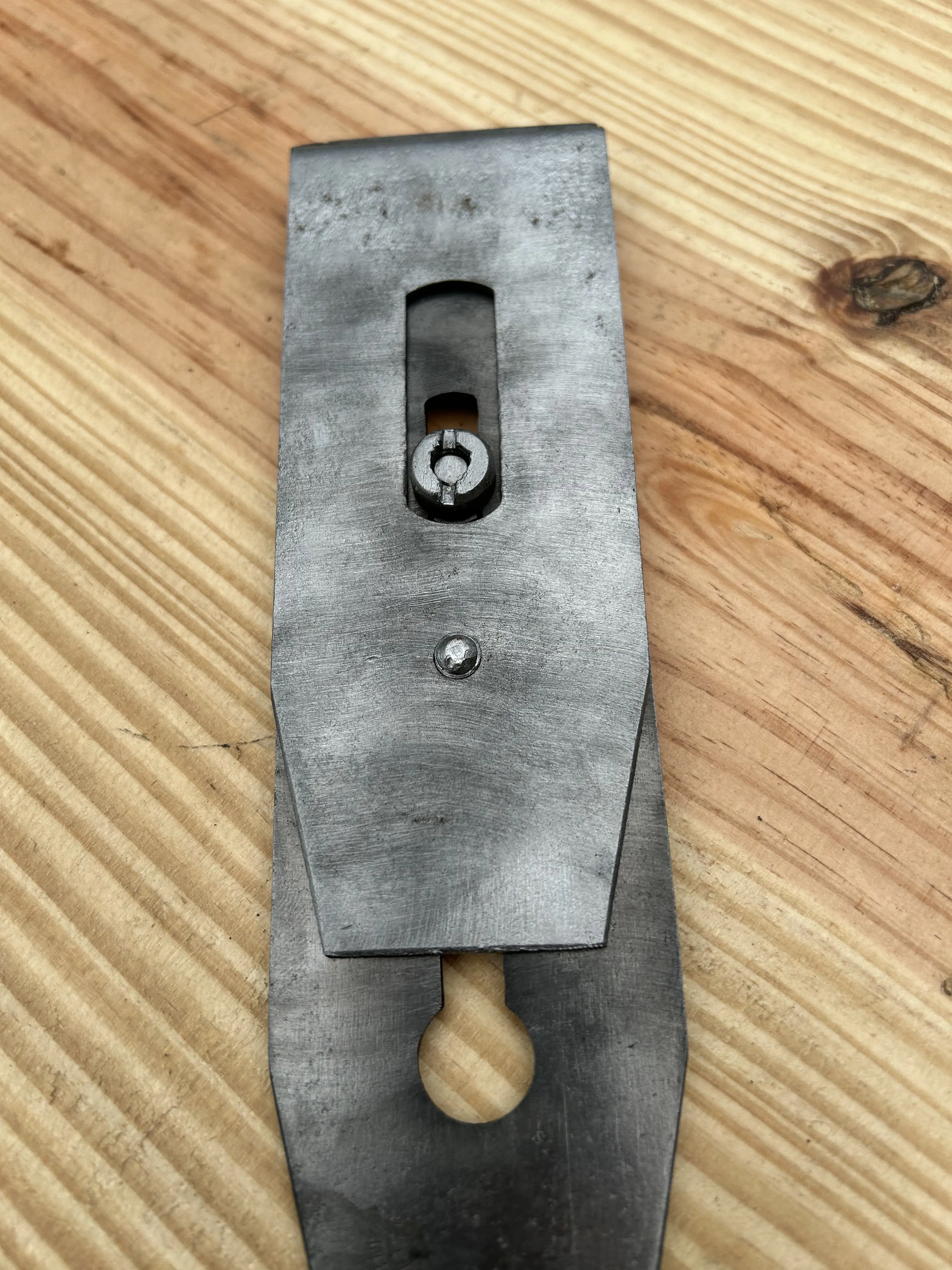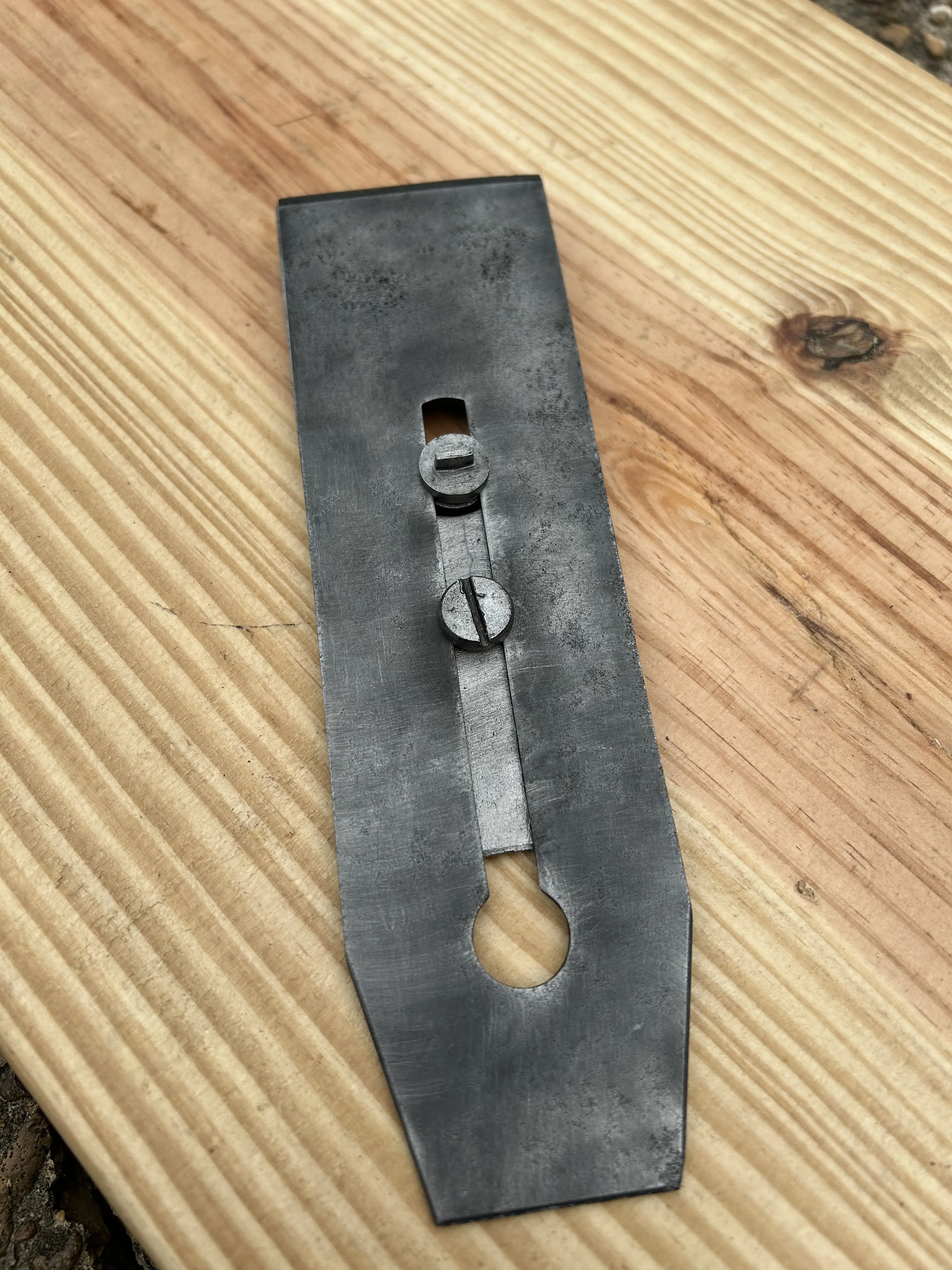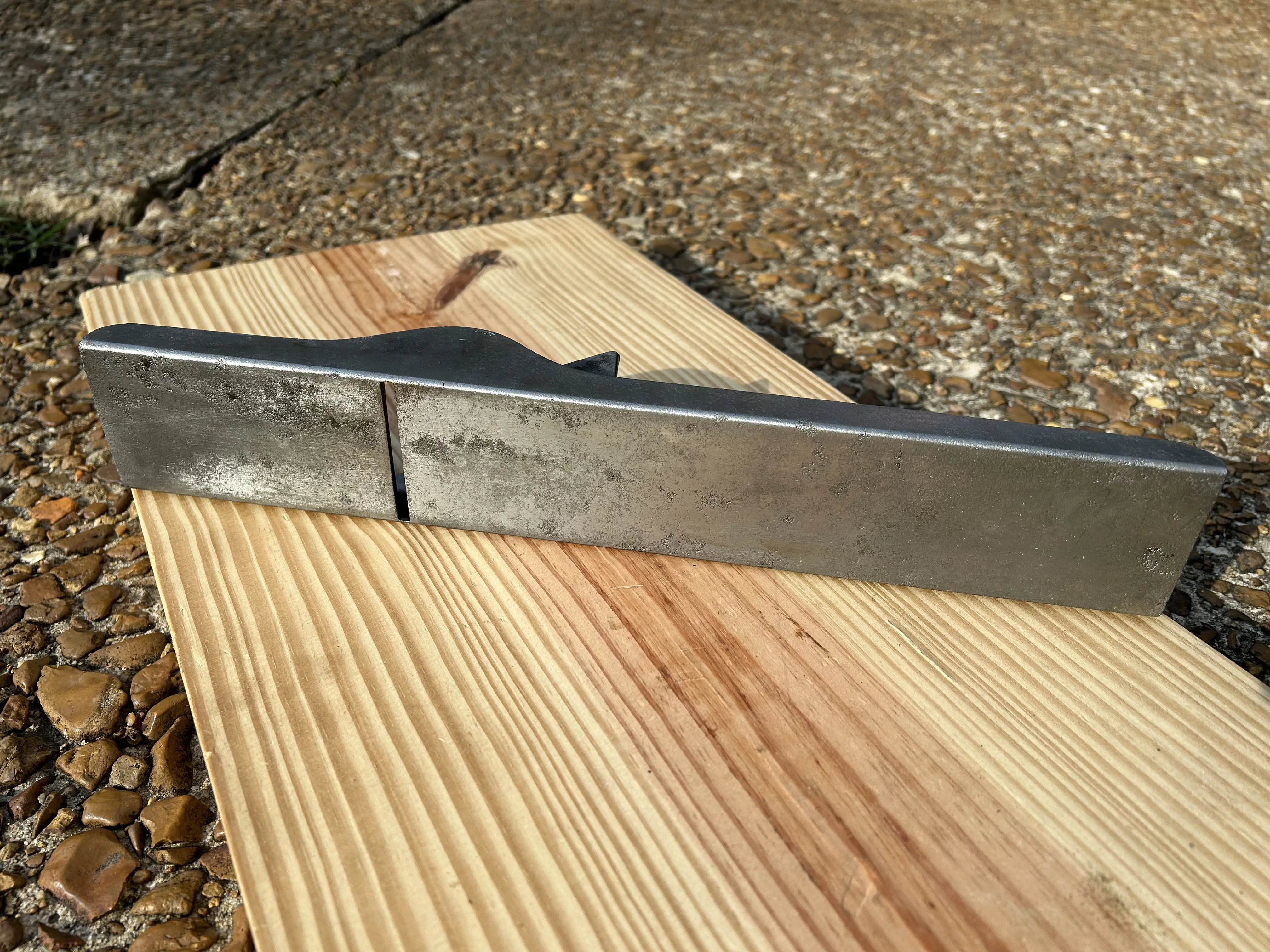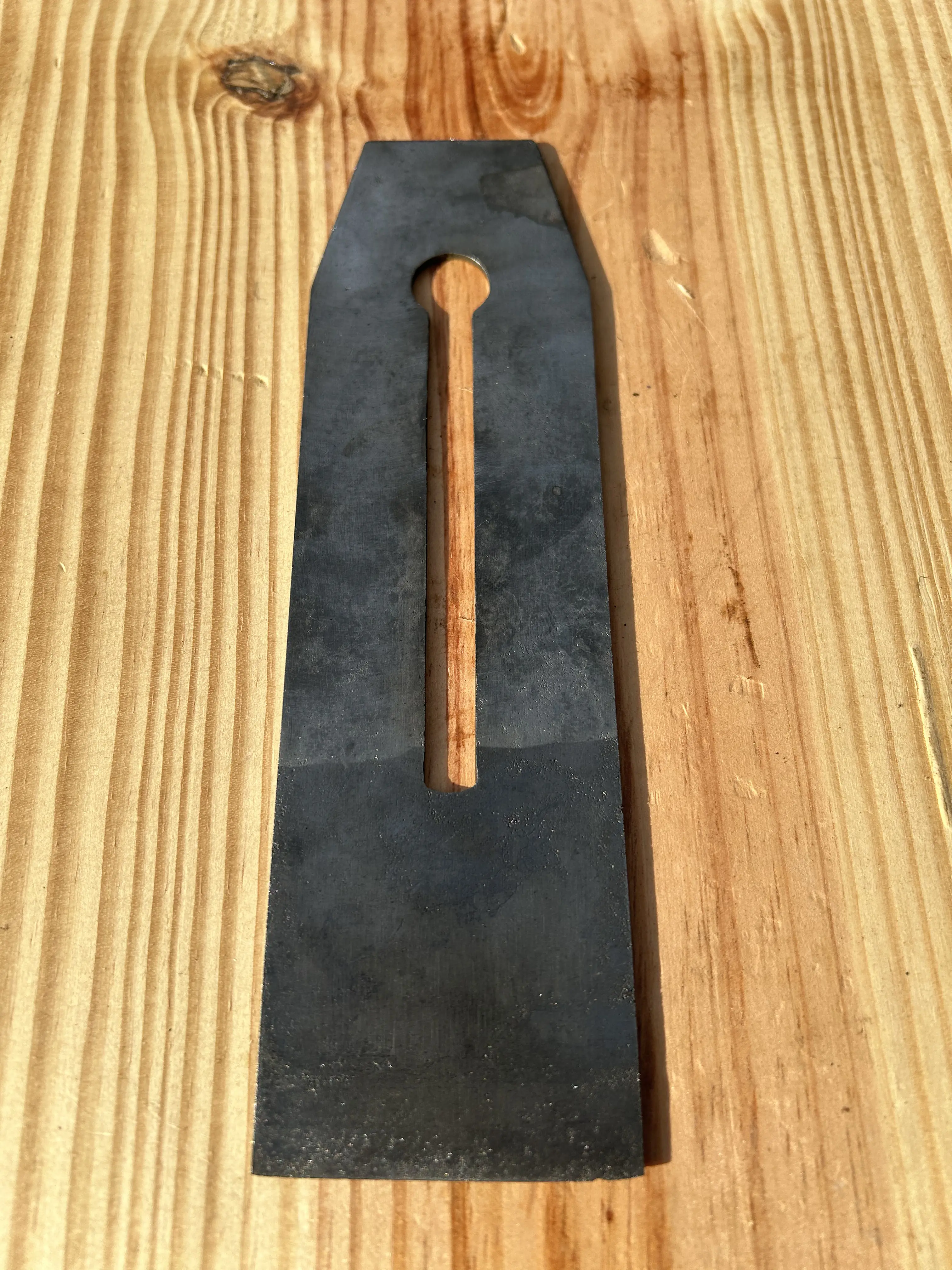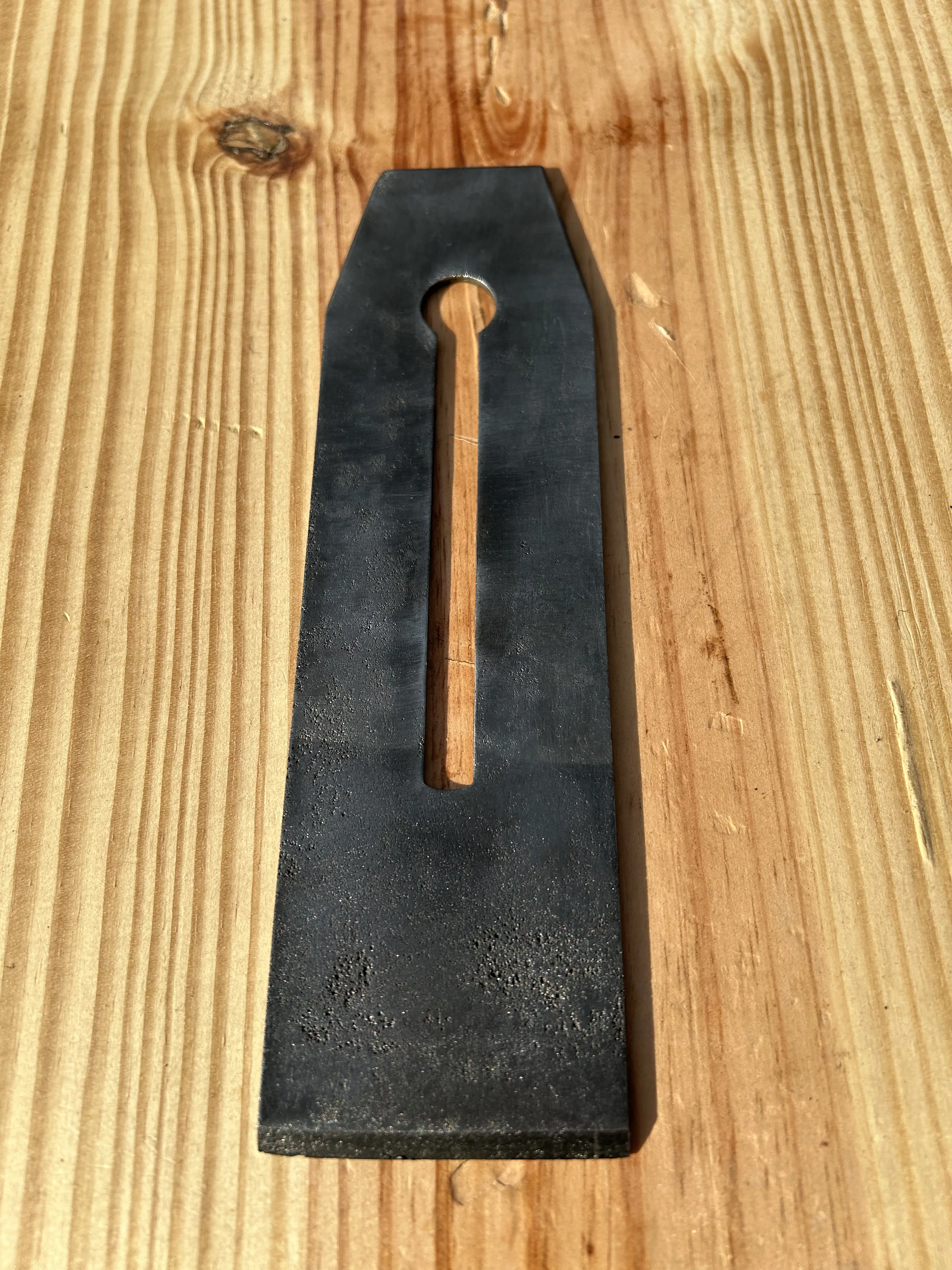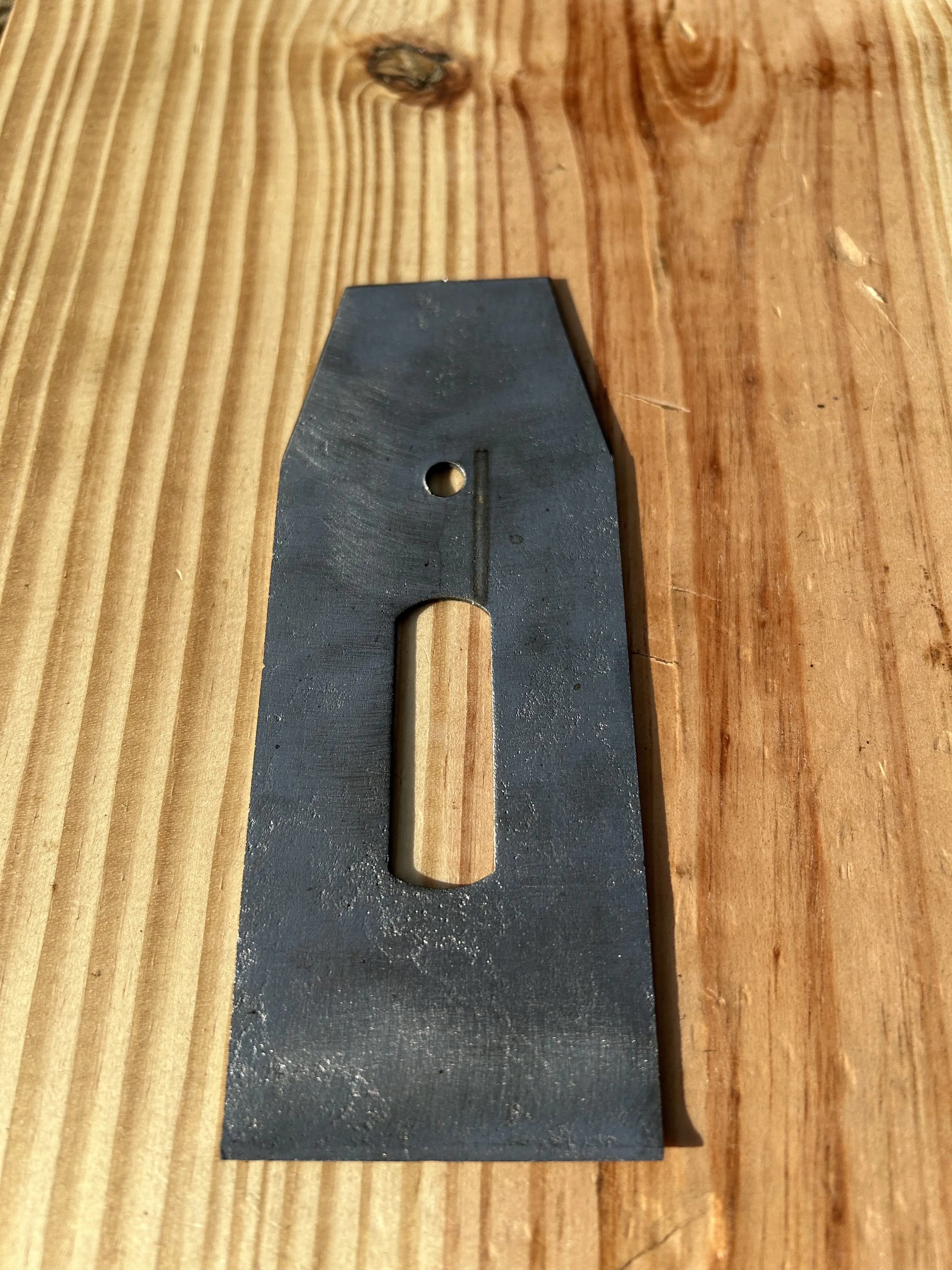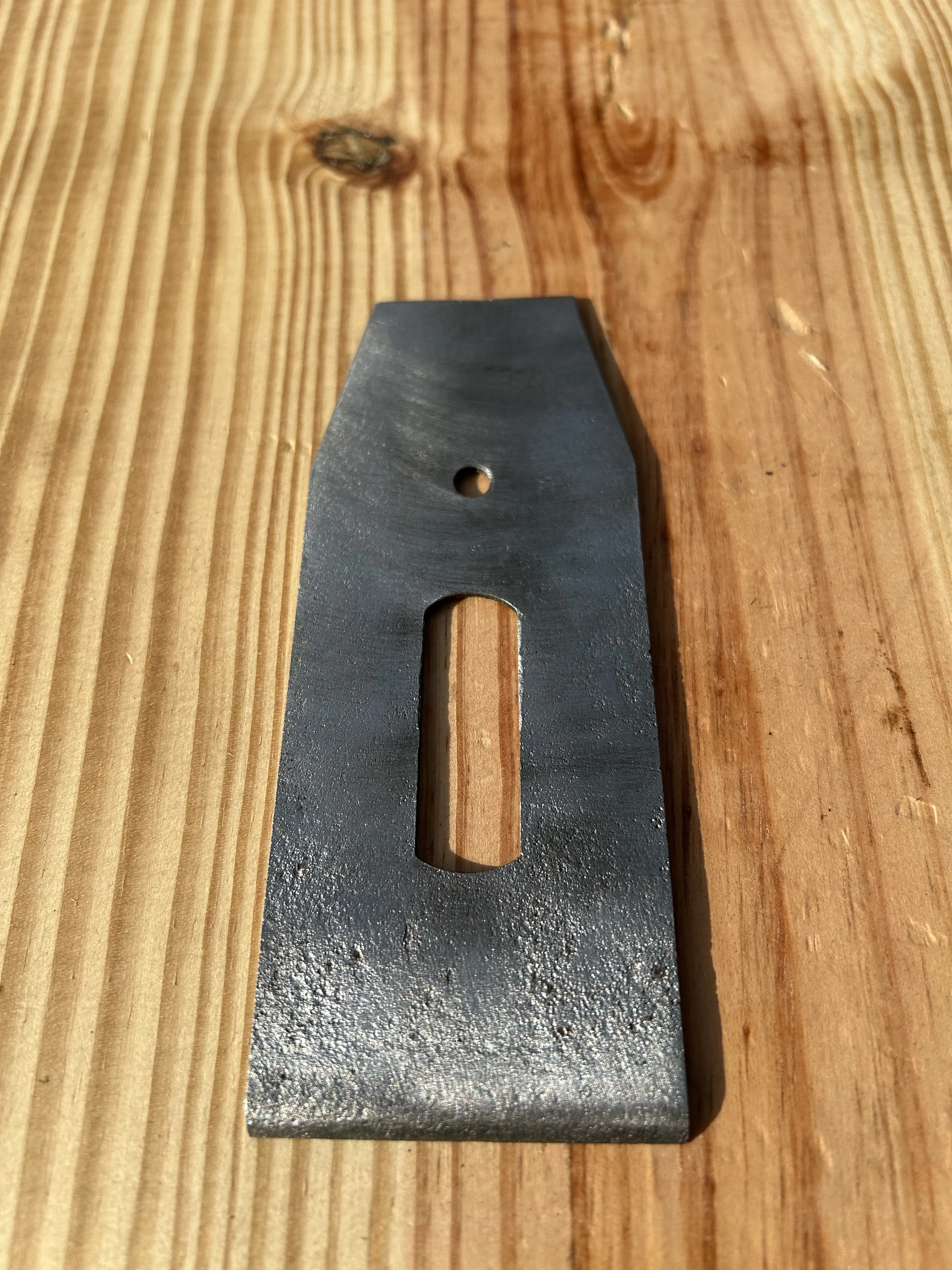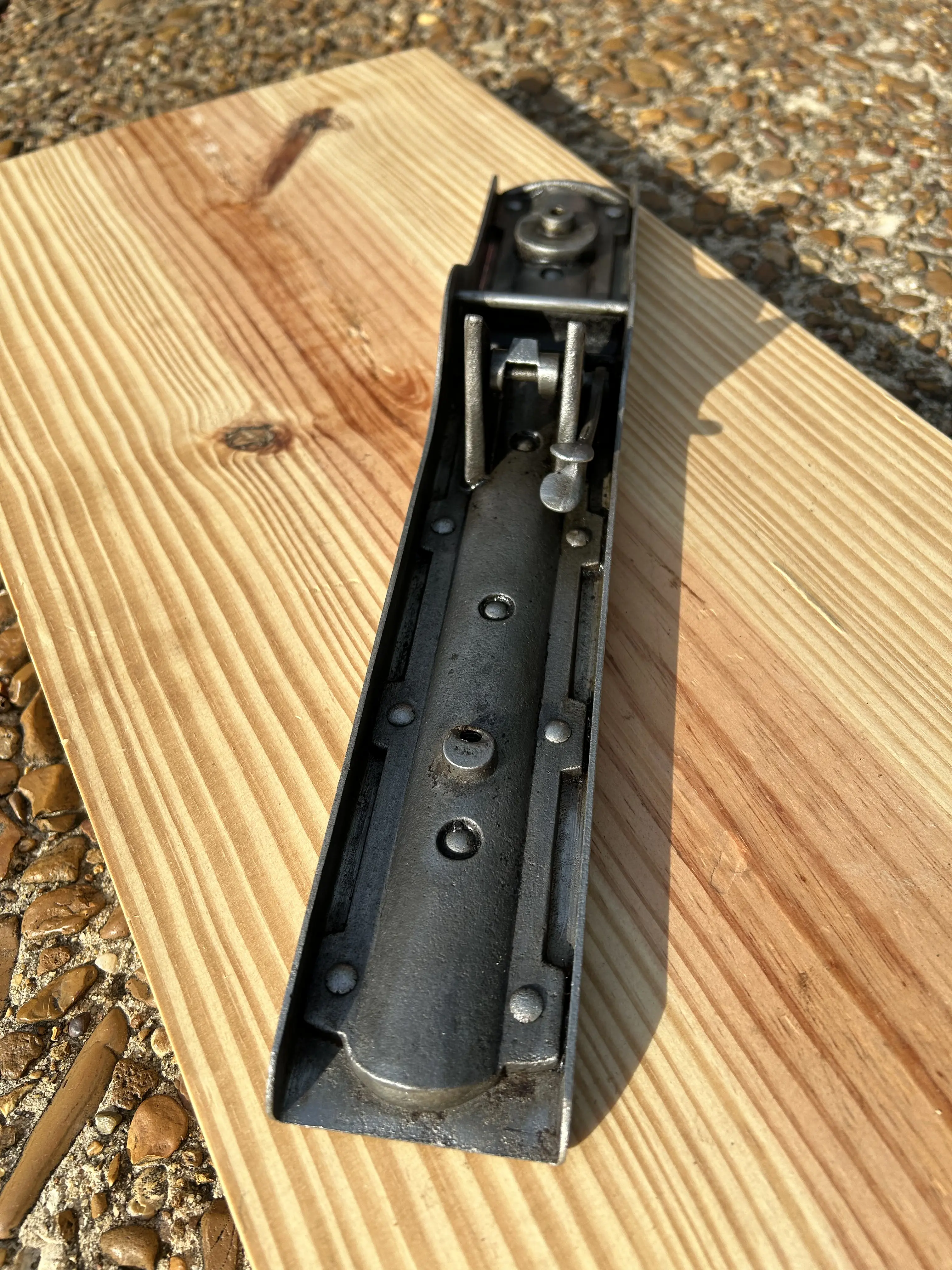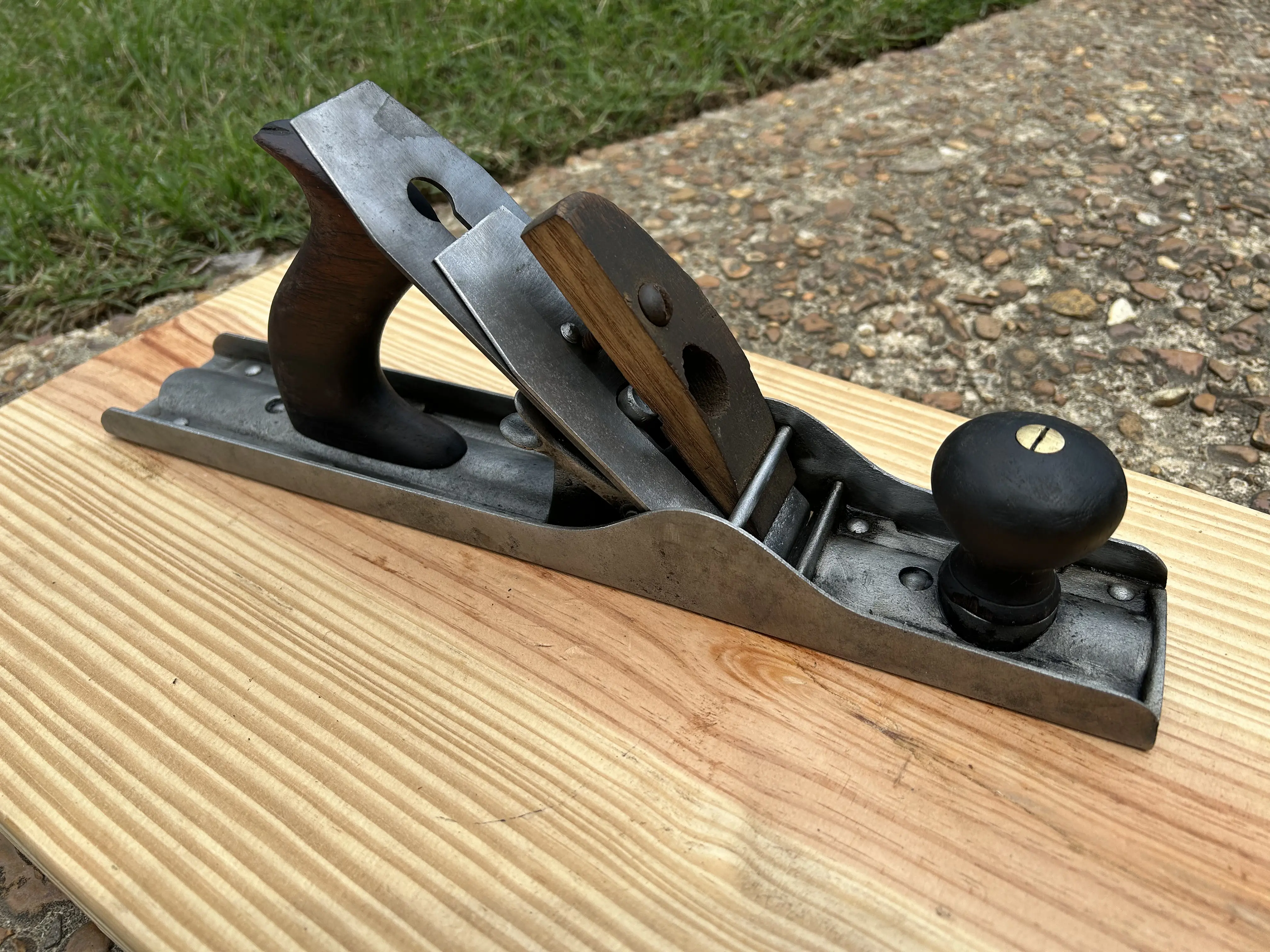The Stanley Liberty Bell 105 is a fascinating piece of history. Introduced in 1877 to celebrate the Centennial, it was produced until 1918. The base is an all steel construction with cast iron parts rivetted to the top. Not many have survived due to their tendency to rust out. The transitional models in the series are much more common.
Also noteworthy is the interesting adjustment lever vs the traditional Bailey screw. The special nut in the iron/chip breaker assembly mates with the adjustment mechanism and provides a very smooth and reliable depth adjustment with no slop like the normal screw. This may have been intended to be an “automatic” design avoiding lateral setup after sharpening, but I am not sure.
Sadly, this is missing the lever cap with the beautiful Liberty Bell design. A previous owner engineered their own wooden lever cap from what appears to be oak. Unfortunately, it split and the other side was missing, so I could not reassemble it. I have not done any rust removal or restoration on it and am including it as-is. I am not sure if the more common transitional lever caps could be used to replace it.
While remarkably in tact, there is significant pitting throughout the metal. I did have to use evaporust to clear out the layers of time’s damage. The rosewood tote and handle are absolutely gorgeous.
Faint hints of the original japanning are still deep inside the frog/lever. This is probably more of a collectors item than a worker. I did not fettle the blade and chip breaker, but it is able to take a shaving.
Please note that the blade is not interchangeable with a Stanley #4/#5. The thinner slot accommodates the special screw. I believe a standard chip breaker could be used, but I’m not promising that as I haven’t tried and could not find any information on it.
The best information I can find on it is available here.
There is a thin layer of hard wax on all metal parts to prevent rust. So it is a little tacky. That’s on purpose and not gunk.
It will be shipped disassembled to protect all parts from a box being kicked or thrown like a frisbee by disgruntled shipping employees.
I do highly recommend James Wright’s paste wax, particularly his hard wax.
